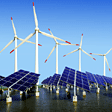- Home >
- Our Actions >
- Ambassador report
2
Comments
Solid Waste Management |
|---|
|
Solid waste is the unwanted or useless solid materials generated from combined residential, industrial and commercial activities in a given area. It may be categorized according to its origin (domestic, industrial, commercial, construction or institutional) according to its contents (organic material, glass, metal, plastic paper) or according to hazard potential (toxic, non-toxin, flammable, radioactive, infectious). Solid waste is one of the three major environmental problems in Malaysia. It plays a significant role in the ability of Nature to sustain life within its capacity. As of the year of 2008, 23,000 tonnes of waste is produced each day in Malaysia, with less than 5% of the waste is being recycled. In Selangor alone, waste generated in 1997 was over 3000t/day and the amount of waste is expected to rise up to 5700t/day in the year 2017(Yachio Engineering, 2000 cited in Muhd Noor Muhd Yunus, 2000). An alarming 19% of waste ends up in our drains, which then causes flash floods and drainage blockage. This situation has been and will be reducing our environmental capacity to sustain life. Management of solid waste reduces or eliminates adverse impacts on the environment and human health and supports economic development and improved quality of life. Solid Waste Management (SWM) consist of generation, separation, collection, transfer, transportation and disposal of waste.  Photo of rubbish collectors in Malaysia Different solid waste management method A) Composting Backyard or onsite composting can be conducted by residents and other small-quantity generators of organic waste on their own property. By composting these materials onsite, homeowners and select businesses can significantly reduce the amount of waste that needs to be disposed of and thereby save money from avoided disposal costs. Reduces mass and volume Composting reduces the moisture content making it easier to handle Composting releases ammonia which reduces the odour emitted Provide saleable product B) Incinerator Solid waste incinerators are used to combust organic substances contained in waste. Incineration converts solid waste into ash, flue gas and heat. Incineration is the main alternative to landfills, which hold solid waste in a contained area. Modern solid waste incinerators separate most dangerous gases and particulates from the flue gas produced during incineration. Recovering energy to be used in heating or the supply of electricity. Reducing the volume of the waste Reducing transportation costs Reducing the production of the greenhouse gas methane C) Sanitary landfill In high-income countries, the level of isolation achieved may be high. However, such an expensive high level of isolation may not be technically necessary to protect public health. The ways of doing this should be adapted to local conditions. Reduce or eliminate the risks that waste disposal may pose to the public health and environmental quality recover energy Least environmental and health risk |
|
|










 Previous : International Day of the fore...
Previous : International Day of the fore...









2 Comments
Sad to note alarming solid waste generation in Malaysia and insignificant % being recycled.
Thanks for highlight it here, Wen. You right said that efficient and proper management of solid waste can have positive impact on environment , human health , quality of life and also on economy.
Posted 02-03-2015 23:17
soil is a very important for the plant .
pleas do not west a soil.
no soil no earth only desert .
Posted 02-03-2015 17:36